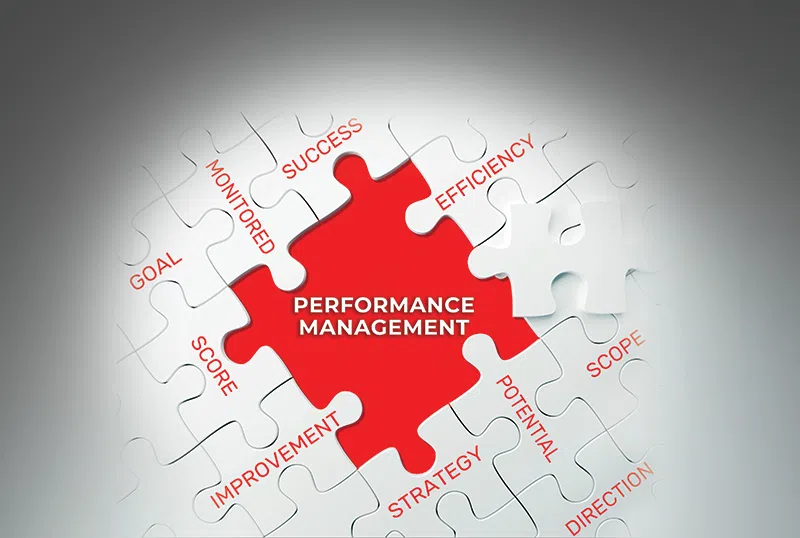Employee performance mapping can help you improve your company’s competitive edge. It's more important than ever for HVACR contractors to be savvy in the marketplace. The industry is influenced by many things, like market demand, regulatory requirements, technological advancements, and customer preferences. The best contractors deliver superior customer service and great customer experiences. To do that, you will need to align employee goals with your company's overall strategy to improve customer satisfaction.
More specifically, managers and owners of many small and medium-sized HVACR companies may lack experience in communicating and implementing performance objectives that support customer loyalty and growth.
Here are some strategies that will help you avoid common pitfalls and outperform your competitors. The principles of management-by-objectives outlined below can help leadership ensure employees understand the company's vision and direction, as well as their own performance objectives.
Management-by-Objectives
HVACR industry leaders help their employees prioritize performance objectives thereby helping them to achieve business goals. Management by objectives (MBO) is an employee-manager collaboration to improve customer experience through specific performance objectives. Implementing an MBO process reduces mediocre performance and offers employees a clear road map to performance improvement.
Often goals are unclear with ambiguous language. To improve clarity, managers, and employees must set specific objectives, define outcomes, and set targets. This process involves:
• Be result-focused
• Be consistent
• Be specific
• Be measurable
• Be related to time
• Be attainable
Competitive HVACR companies communicate effectively from the top down, impacting both employees and customers. Customer-centric companies understand the importance of clear communication.
Creating Customer Satisfaction
The most competitive and best-performing companies utilize these elements as part of their action plan to improve customer satisfaction:
• Establish customer satisfaction metrics: Find out what metrics your business uses to measure customer satisfaction. It could include customer satisfaction score (CSAT), Net Promoter Score (NPS), or customer retention rate.
• Get baseline data: Track current customer satisfaction metrics. This establishes a baseline to measure improvements. Customers can provide feedback through surveys, feedback forms, and reviews.
• Identify areas for improvement: Analyze customer satisfaction data to see where improvements can be made. Take note of trends, patterns, and common pain points. Make sure you prioritize the things that will have the biggest impact on customer satisfaction.
• Target performance improvement: Set specific, measurable targets for each area of improvement. Define customer satisfaction success in terms of customer satisfaction metrics. These targets should be realistic, achievable, and aligned with your overall business goals.
• Plan improvement initiatives: Develop potential initiatives or strategies to address the areas for improvement. A positive impact can be achieved by changing processes, training customer service personnel, adding products, or upgrading technology.
• Prioritize improvement initiatives: Evaluate each improvement initiative for impact and feasibility. Assess whether the initiatives will drive significant improvements in customer satisfaction and the available resources and capabilities in your organization.
• Get customer feedback: Continually gather customer feedback throughout implementation to determine whether improvements are working. Gather insights from customers through surveys, focus groups, and direct feedback channels.
• Refine and improve: Review and improve results. Adjust initiatives based on feedback. Continually seek ways to improve the customer experience.
Satisfying customers is an ongoing process. Keep track of performance, gather feedback, and adjust initiatives to meet evolving customer expectations. You can enhance customer satisfaction and build long-term loyalty by mapping out performance improvements.
Employee Performance Mapping to Share Vision
A clear line of sight between employee contributions and the company's vision is created by mapping employee performance to the company's vision.
As a leader, you can better facilitate this process by following these guidelines:
• Start with the company vision: Clearly articulate the company's vision, mission, and long-term goals. Establish a clear understanding of the company’s purpose and direction among all employees.
• Define key performance areas: Determine which performance areas directly impact the vision. Depending on your organization's strategic priorities, these could include customer satisfaction, innovation, operational efficiency, and employee development.
• Cascade objectives: Make sure every employee knows the company's vision and strategy. Translate organizational goals into specific objectives for each team member or employee. Align these objectives with the company's vision and make them measurable.
• Create individual development plans: Develop individual development plans for employees that support the company's vision. Identify the skills, knowledge, and behaviors employees need to succeed. Enhance employee capabilities by providing resources, training, and mentoring.
• Monitor performance: Perform regular performance assessments against the established objectives. Provide feedback on progress, strengths, and areas for improvement. In these discussions, discuss ways to enhance performance and align personal performance with the company's vision. Recognize and reward employees: Align employees' performance with the company vision and demonstrate behaviors that support it. Identify and celebrate individuals who exemplify the desired values and contribute to the vision.
• Recognize and reward employees: Align employees’ performance with the company vision and demonstrate behaviors that support it. Identify and celebrate individuals who exemplify the desired values and contribute to the vision.
• Communicate and collaborate: Share ideas, best practices, and lessons learned among employees through open communication. Employees can learn from each other, exchange insights, and contribute collectively to the company's goals.
• Track progress and adjust: Continually monitor progress toward the vision and evaluate effectiveness. Analyze if employees' objectives are aligned, if performance metrics are driving desired outcomes, and if adjustments are needed.
• Updates on progress and success: Let employees know how the company is doing towards its vision. Share success stories, milestones, and positive results to reinforce their impact. Provide regular feedback on how individual performance contributes to the overall goal.
Leadership committed to management-by-objective guidelines increases employee performance and productivity, ensuring the company's survival and profitability. Mapping employee performance to the company vision connects individual contributions to the company's goals.
Ursula Mannix is a customer experience consultant. In addition to CX consulting, she designs and facilitates workshops and seminars. She can also deliver keynote addresses. For more information, visit: https://ursulamannix.com.



